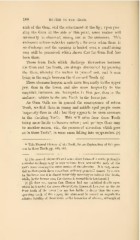Page 204 - My FlipBook
P. 204
188 HUNTER ON THE TEETH.
arch of the Gum, and the attachment of the lip ; upon pres-
sing the Gum at the side of this point, some matter will
commonly be observed, oozing out at the eminence. This
eminence seldom subsides entirely ; for even when there is
no discharge, and the opening is healed over, a small rising
may still be perceived, which shows that the Gum Boil has
been there.
Those Gum Boils which discharge themselves between
the Gum and the Tooth, are always discovered by pressing
the Gum, whereby the matter is pressed out, and is seen
lying in the angle between the Gum and Tooth,
(q)
These abcesses happen much more frequently in the upper
jaw, than in the lower, and also more frequently to the
cuspidati, incisores, and bicuspides in that jaw, than to the
molares ; seldom to the fore Teeth in the lower jaw.
As Gum Boils are in general the consequence of rotten
Teeth, we find them in young and middle aged people more
frequently than in old ; but they appear to be most common
to the shedding Teeth. This will arise from those Teeth
being more liable to become rotton ; and perhaps there may
be another reason, viz., the process of ulceration which goes
on in these Teeth*, in some cases falling into suppuration, (r)
* Vide Natural History of the Teeth, for an Explanation of this pro-
cess in those Teeth, pp. 140, 141.
(q) [In cases of rheumatic and some other forms of chronic periostitis
a similar discharge may be seen to issue from around the neck of the
tooth upon pressing the outer surface of the alveolus. It is very essen-
tial to distinguish these cases from ordinary gum-boil caused by caries.
In the latter case it is almost invariably necessary to extract the tooth,
while, in the former case, the disease is amenable to treatment.]
(r) [It does not appear that Hunter had any statistical details upon
which he founded the above observations, inasmuch however as the six
front teeth of the lower jaw are less liable to decay than the corre-
sponding teeth of the upper, his statement is correct as regards the
relative liability of these teeth to the formation of abscess, although of


